Hey sorry I dropped the ball on your deck layout. I got your message and completely forgot about it. Looks like you have a good plan though... Why not do an inlay of California?
Another in Texas - Cypress
- Thread starter twinkiesmommy2009
- Start date
You are using an out of date browser. It may not display this or other websites correctly.
You should upgrade or use an alternative browser.
You should upgrade or use an alternative browser.
Thanks everyone! It's been crazy busy around here. They finished our laminate floors and we've been trying to put the house back to rights, the kids are in swim lessons everyday, our 13 exchange students have all arrived, and school is about to start. Decking is done though and we've been swimming! I think I have the testing and chemicals down for basic maintenance (though my CYA bottle went missing today [emoji37]). Here are some pictures!

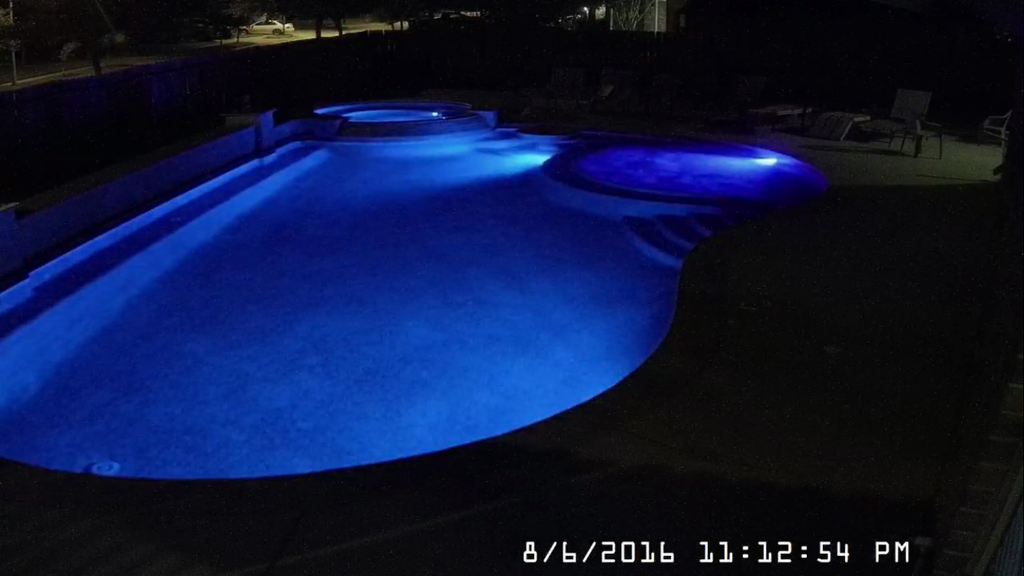
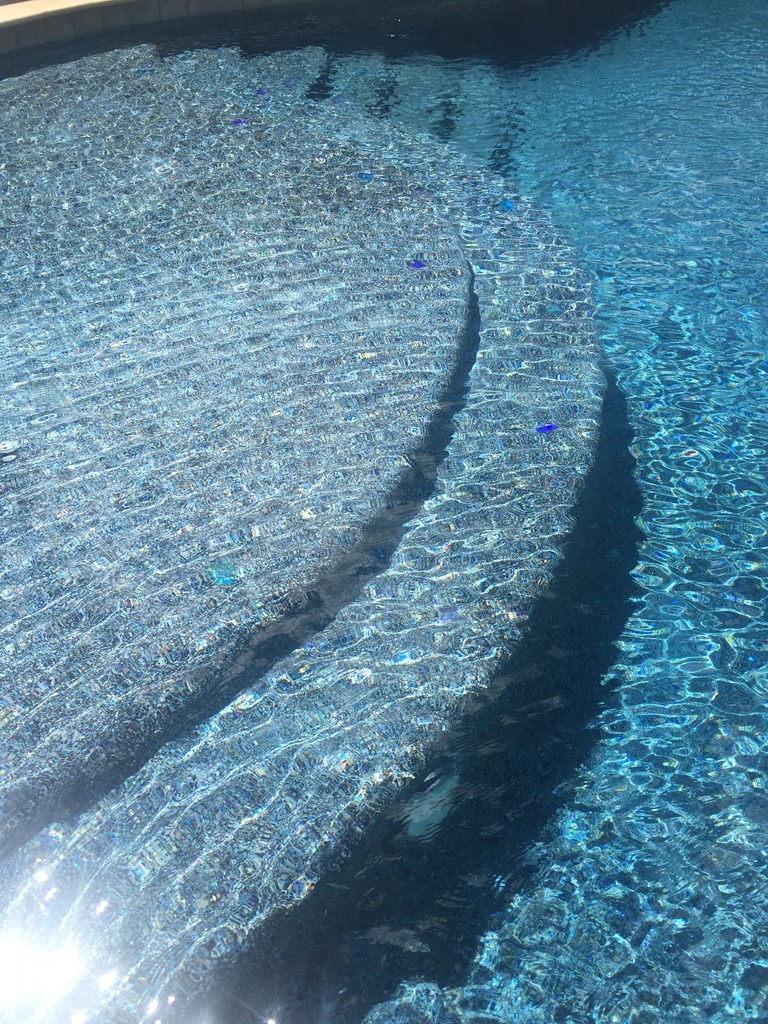


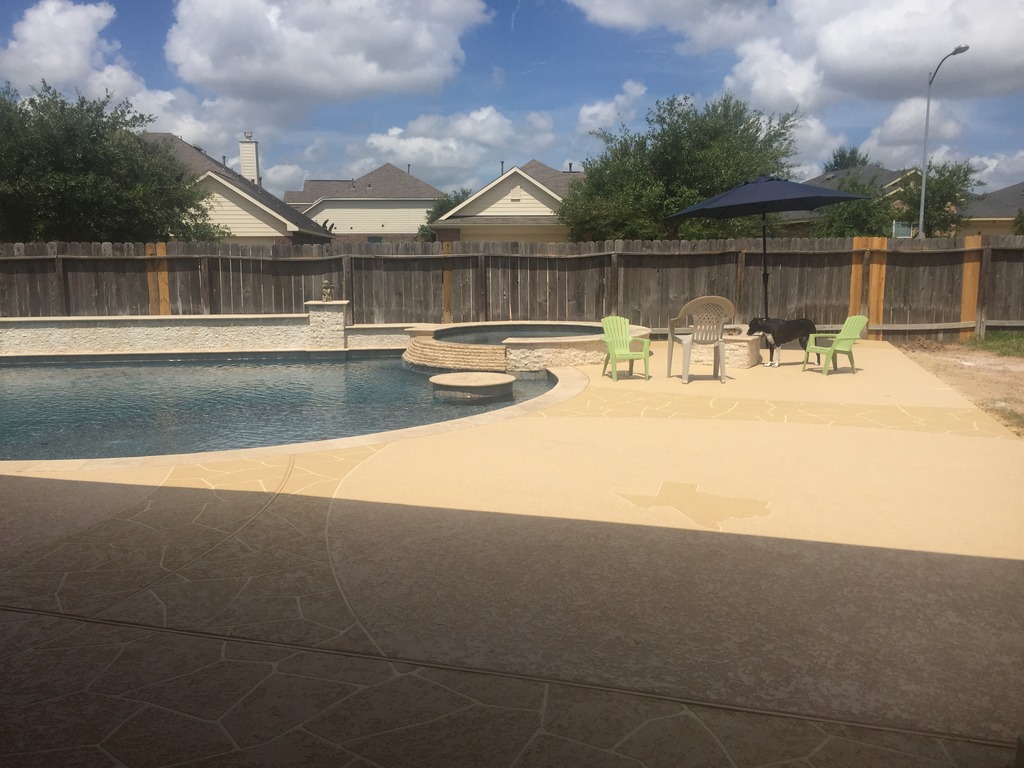
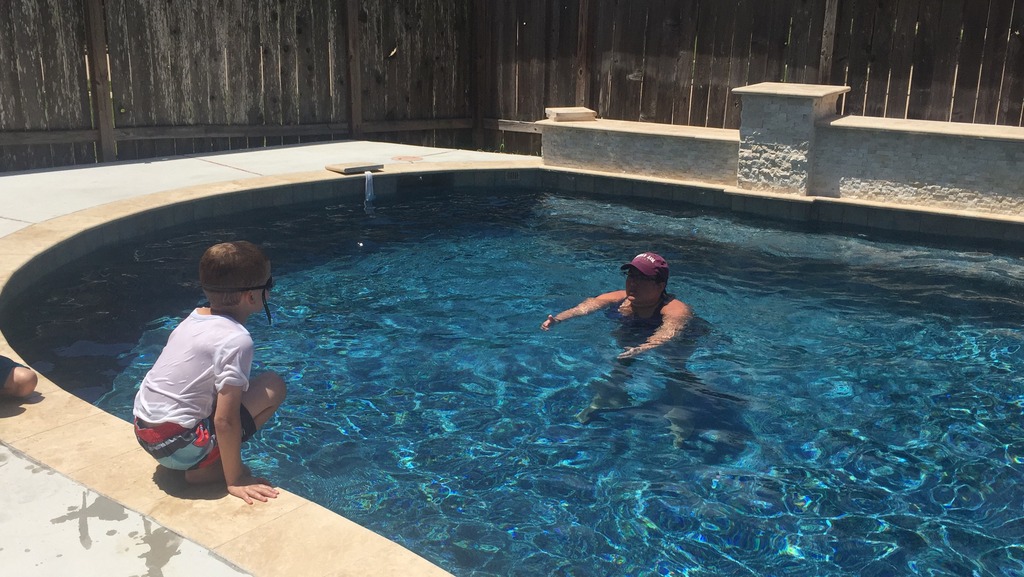






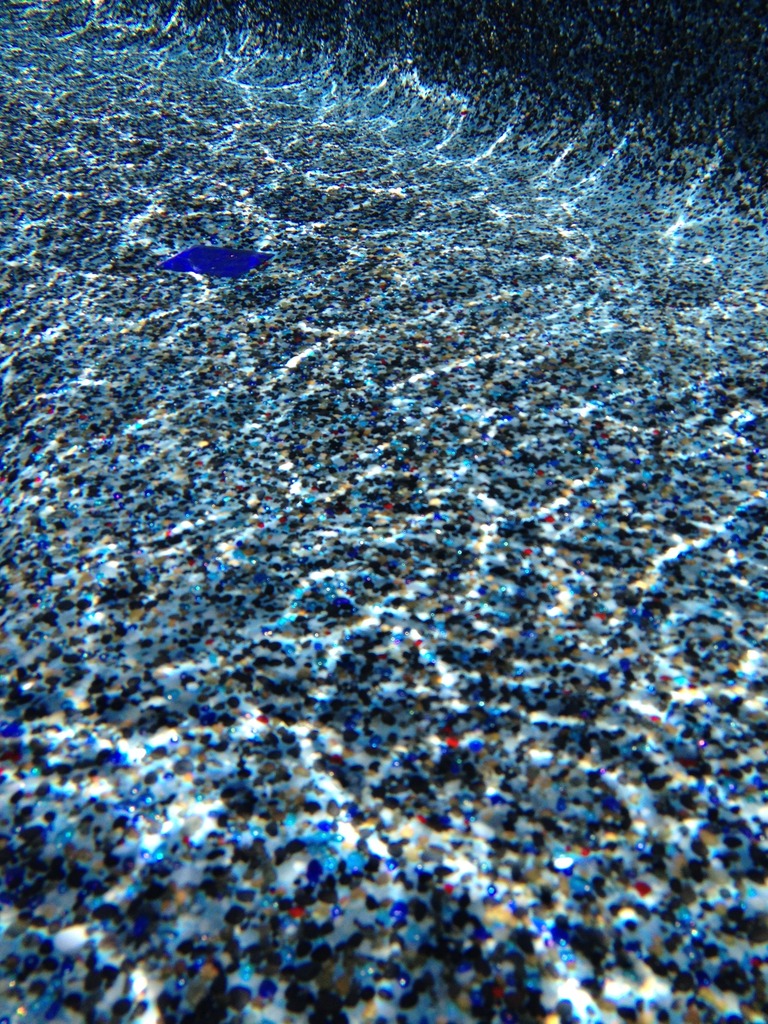


Sent from my iPhone using Tapatalk
















Sent from my iPhone using Tapatalk
cbink
0
Looks like the swimming lessons are paying off! SO CUTE!!! Little fishes!
LOVE the plaster! WOW!!!
Any idea where your CYA bottle went?????? NOT Funny but at least it is one test you only do every once in a while so have time to order and wait for a new one

LOVE the plaster! WOW!!!
Any idea where your CYA bottle went?????? NOT Funny but at least it is one test you only do every once in a while so have time to order and wait for a new one

Looks like the swimming lessons are paying off! SO CUTE!!! Little fishes!
LOVE the plaster! WOW!!!
Any idea where your CYA bottle went?????? NOT Funny but at least it is one test you only do every once in a while so have time to order and wait for a new one

No idea! After testing in the morning I left my test bottles and tubes on the side of the spa to dry before putting them away in my kit. When I went to get them the CYA bottle was just gone but the lid was there. The kids and teens went swimming later so I sent them on a hunt but it didn't turn up.
Sent from my iPhone using Tapatalk
Have them look on the ground just in case the wind knocked it over and out into the yard.
I saw your Texas outline! That is the purrfect spot for it! It showcases it!

I saw your Texas outline! That is the purrfect spot for it! It showcases it!

Thank you!! I can't wait until school starts for multiple reasons! That's the same time we get to start using our robot. There is a lot of dust and pebble debris in the pool but the water is crystal clear. It's amazing that on a sunny day I can tell you if it needs chlorine or acid based on the color of the water. I'm almost always right on. My husband and PB can't see the difference in hues but I can. Love it!!
Sent from my iPhone using Tapatalk
Sent from my iPhone using Tapatalk
Sunbaby
LifeTime Supporter
- Feb 27, 2015
- 1,402
- Pool Size
- 15000
- Surface
- Plaster
- Chlorine
- Salt Water Generator
- SWG Type
- Jandy Truclear / Ei
ellsian
0
Thank you everyone!! I think landscaping is next. I need plant ideas!
Wish list for some of them:
-Pretty
-Easy to care for (we have gray thumbs)
-Clean - doesn't shed a lot
-Natural mosquito repellents
-Edible
And pictures to refresh how it sits in the lot.
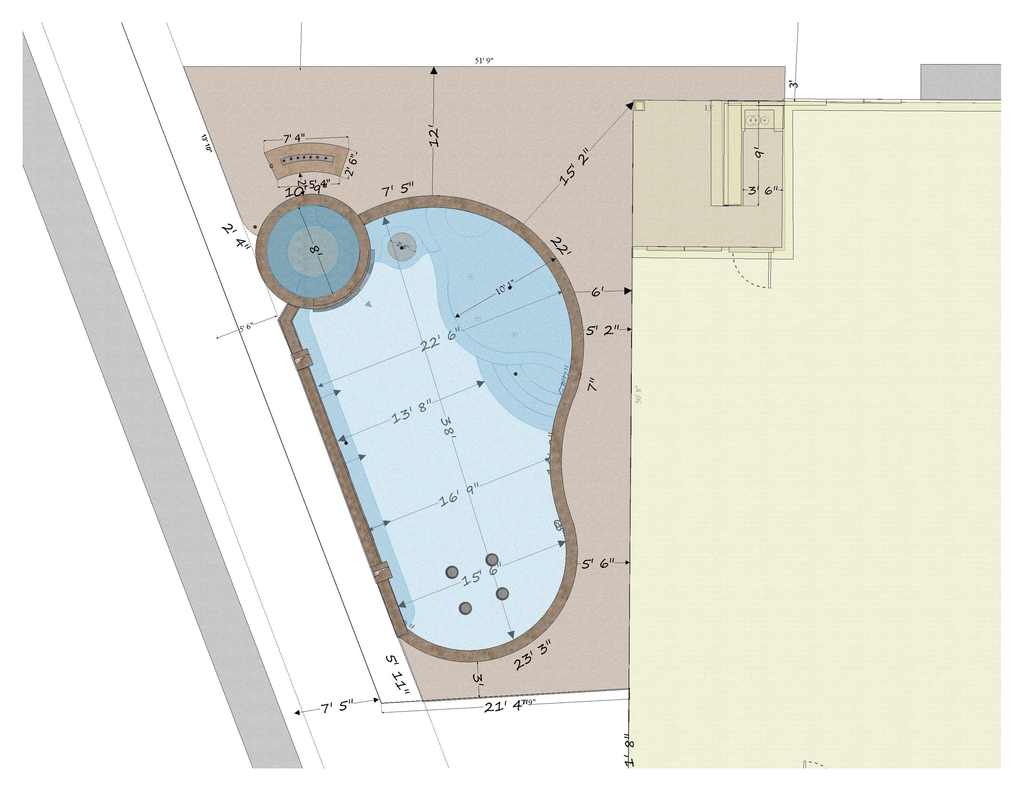
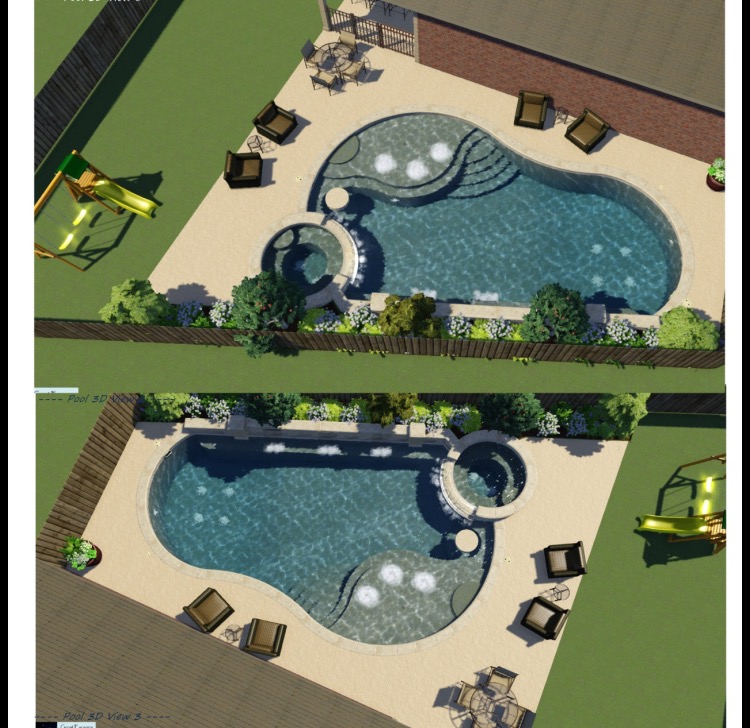
Playset will not be located there. It will be shifted down and parallel with the covered patio.
Sent from my iPhone using Tapatalk
Wish list for some of them:
-Pretty
-Easy to care for (we have gray thumbs)
-Clean - doesn't shed a lot
-Natural mosquito repellents
-Edible
And pictures to refresh how it sits in the lot.


Playset will not be located there. It will be shifted down and parallel with the covered patio.
Sent from my iPhone using Tapatalk
Here are my picks on edibles you might consider, My guess is Cyrpess is hardiness zone 9a
First those smaller things that you could plant along the fence behind the pool side wall which I think runs roughly north/south so should get full sun about 5 hours per day in the summer months.
1, Sugarcane, you just need to be careful on the variety you pick, some heirloom varieties only grow 6-7 feet tall, others can get up to 15-20 feet. They like full sun, so growth might be stunted a bit in this location. Downside are sharp leaves and some varieties have prickly hairs on the stalks. Sugarcane is a member of the grass family and is grown commercially along the Texas gulf coast to a limited degree (about 1/10th of the amount that is grown in Louisiana or Florida). Sugarcanes are broken down into 3 basic types chewing, syrup, and crystal, although there are many cross overs, for home growing you most likely want chewing canes which have a softer cane and often lower sugar content. These should grow with little or no routine care other than perhaps watering during severe draught, adding fertilizer once per year, due to their rapid growth rate (a 6 inch planting segment can grow 4-5 ft in 3-4 months) they tend to suck the nutrients out of the ground after a couple of years.
2, Bananas you are far enough south that some edible varieties of bananas can grow, fruit and ripen before the first freeze, it is also warm enough there to leave banana plants in the ground year round, although again selection is important. You probably want something like dwarf cavendish, dwarf namwah, California Gold (a Texas variety), Dwarf Brazilian, Ice Cream, etc. Most of these dwarf varieties get to be 7-9 ft tall, but the stems die off after fruiting each year. They grow in clumps that grow more and more new stems each year which you can split and plant elsewhere.
The above would both be fall harvest just before the first freeze
3, Thornless blackberries, there are a number of varieties, but if I had to pick just one for your location I would probably pick Prime-Ark Freedoms this is a recent (2013) release from the University of Arkansas, it is primocane fruiting, but tends to do better in our region as florcane fruit producing (second year canes in the late spring vs first year canes in the fall), in cooler climates it does better with primocane first year fruiting, but our summers tend to be too hot for much primocane fruit production, so in our climate you can expect a heavy berry crop in June, and a much lighter one in September most years. Blackberries need about 1-2 inches of rain equivalent per week in the growing season so will need drip irrigation in dryer growing months. This variety of thornless blackberry will likely nee some support, they tend to having a trailing growth vines the first year, with more erect vines developing in the 2nd or 3rd year after planting. These also take some upkeep as the 2nd year canes will need to be cut out and removed after fruiting. Left untended this variety may reach a height of 7-8 ft, although you get better fruit production if you top them at about 4 ft. then let them grow out to about 5-6 ft.
For the north part of the yard I would suggest citrus, in particular I would suggest Satsuma (Brown Select, Owari, St. Ann Early or Louisiana Early, if you have room I suggest 2 an early where you get fruit around Sept and a regular where you get fruit in late November) These are all cold hardy citrus, they may require active sheltering from hard freeze (covering with a work light or traditional not LED large bulb C7 christmas lights for a heat source ) and watering during draught the first 2-3 years, but once established they should take care of themselves most of the time.
p.s. I just checked and Cypress is zone 8b, the 8b/9a line runs just south of I-10 through Houston
First those smaller things that you could plant along the fence behind the pool side wall which I think runs roughly north/south so should get full sun about 5 hours per day in the summer months.
1, Sugarcane, you just need to be careful on the variety you pick, some heirloom varieties only grow 6-7 feet tall, others can get up to 15-20 feet. They like full sun, so growth might be stunted a bit in this location. Downside are sharp leaves and some varieties have prickly hairs on the stalks. Sugarcane is a member of the grass family and is grown commercially along the Texas gulf coast to a limited degree (about 1/10th of the amount that is grown in Louisiana or Florida). Sugarcanes are broken down into 3 basic types chewing, syrup, and crystal, although there are many cross overs, for home growing you most likely want chewing canes which have a softer cane and often lower sugar content. These should grow with little or no routine care other than perhaps watering during severe draught, adding fertilizer once per year, due to their rapid growth rate (a 6 inch planting segment can grow 4-5 ft in 3-4 months) they tend to suck the nutrients out of the ground after a couple of years.
2, Bananas you are far enough south that some edible varieties of bananas can grow, fruit and ripen before the first freeze, it is also warm enough there to leave banana plants in the ground year round, although again selection is important. You probably want something like dwarf cavendish, dwarf namwah, California Gold (a Texas variety), Dwarf Brazilian, Ice Cream, etc. Most of these dwarf varieties get to be 7-9 ft tall, but the stems die off after fruiting each year. They grow in clumps that grow more and more new stems each year which you can split and plant elsewhere.
The above would both be fall harvest just before the first freeze
3, Thornless blackberries, there are a number of varieties, but if I had to pick just one for your location I would probably pick Prime-Ark Freedoms this is a recent (2013) release from the University of Arkansas, it is primocane fruiting, but tends to do better in our region as florcane fruit producing (second year canes in the late spring vs first year canes in the fall), in cooler climates it does better with primocane first year fruiting, but our summers tend to be too hot for much primocane fruit production, so in our climate you can expect a heavy berry crop in June, and a much lighter one in September most years. Blackberries need about 1-2 inches of rain equivalent per week in the growing season so will need drip irrigation in dryer growing months. This variety of thornless blackberry will likely nee some support, they tend to having a trailing growth vines the first year, with more erect vines developing in the 2nd or 3rd year after planting. These also take some upkeep as the 2nd year canes will need to be cut out and removed after fruiting. Left untended this variety may reach a height of 7-8 ft, although you get better fruit production if you top them at about 4 ft. then let them grow out to about 5-6 ft.
For the north part of the yard I would suggest citrus, in particular I would suggest Satsuma (Brown Select, Owari, St. Ann Early or Louisiana Early, if you have room I suggest 2 an early where you get fruit around Sept and a regular where you get fruit in late November) These are all cold hardy citrus, they may require active sheltering from hard freeze (covering with a work light or traditional not LED large bulb C7 christmas lights for a heat source ) and watering during draught the first 2-3 years, but once established they should take care of themselves most of the time.
p.s. I just checked and Cypress is zone 8b, the 8b/9a line runs just south of I-10 through Houston
Last edited:
I have been giving more thought to other potential edibles for this location and have came up with a few others, depending on what your goals are. All of the ones listed above were options that would get reasonable fruit production with minimal effort within 2 years of planting. There are a few others that you may consider such as Figs, but fruit production vs time to fruit will likely be behind the curve vs. citrus pounds of fruit per tree will be lower. There are a number of good potential varieties of fig for your climate, however some types can be very slow growers and take 5 or more years before having significant amounts of fruit, with citrus you would likely have limited amounts of fruit the first couple of years then they start to take off. Most citrus will also keep on the tree for several weeks after becoming ripe. Also most varieties of figs have a very short picking season lasting only a couple of weeks, some varieties fruit twice per year though in our climate.
Fig varieties to consider include Celeste (or any number of Celeste varieties), Brown Turkey Fig, or if you want a newer release strongly consider LSU Purple Fig, it is a fast grower and you get 2 crops per season most years (June and Sept / Oct), down side is they do not preserve well (tend to turn black)
Most other fruits I might put on the list either require more care, you need to have more than one within a couple of hundred feet for cross pollination.
On the topic of blackberries listed above, there are several other thornless varieties worthy of consideration, my top picks for runner up in erect growing in our climate would be Ouachita, and Osage (they however only produce 1 crop per year on 2nd year canes) so if you planted now it would be late spring 2018 before you had any significant fruit vs, the chance of light fruit fall 2017 on the Prime-Ark Freedoms. If you want a trailing variety that does not grow as tall, but requires more vine management consider Sweetie Pie Blackberries (this is a new USDA 2013 release from Mississippi). I planted 4 plants of these earlier this year, they have a much more spreading lower to the ground growth habit and much slower growing than the 3 varieties mentioned above.
Other fruit trees to possibly consider are pear, however many varieties can get fairly large if not actively pruned, and peaches, however peaches need to be sprayed regularly for pest (every 2-3 weeks), particularly during the spring until fruit harvest which ranges from lake June - August depending on the variety. Again don't expect a lot of fruit until year 3 after planting.
Blueberries are another possible option, however they require very specific soil conditions (very low pH soil around 4.5 -5.0, some varieties are slightly more tolerant than others), unless you are lucky enough to have a low pH soil (something below 5.5), then it can take 6-12 months of soil prep before planting in order to be successful with Blueberries, once you get the soil conditions right Blueberries can be fairly low maintenance though. Growth rate can be slow though, don't expect significant berry production until the 4th-5th year for most varieties. For best production you should have multiple varieties of blueberries for cross pollination, bushes can be placed at 3-4 ft spacing though, but that gives little access for picking, fruit late May - July depending on variety, birds love to steal fruit.
Plums, apricots, and crosses like Plucots are all in the same family as peaches and require similar care.
There are several odd fruits out there, some native to the region like Mayhaw (requires 2 varieties, but some nurseries offer multi-budded Mayhaw with 2 varieties to cross pollinate grafted to one tree).
Ike
Fig varieties to consider include Celeste (or any number of Celeste varieties), Brown Turkey Fig, or if you want a newer release strongly consider LSU Purple Fig, it is a fast grower and you get 2 crops per season most years (June and Sept / Oct), down side is they do not preserve well (tend to turn black)
Most other fruits I might put on the list either require more care, you need to have more than one within a couple of hundred feet for cross pollination.
On the topic of blackberries listed above, there are several other thornless varieties worthy of consideration, my top picks for runner up in erect growing in our climate would be Ouachita, and Osage (they however only produce 1 crop per year on 2nd year canes) so if you planted now it would be late spring 2018 before you had any significant fruit vs, the chance of light fruit fall 2017 on the Prime-Ark Freedoms. If you want a trailing variety that does not grow as tall, but requires more vine management consider Sweetie Pie Blackberries (this is a new USDA 2013 release from Mississippi). I planted 4 plants of these earlier this year, they have a much more spreading lower to the ground growth habit and much slower growing than the 3 varieties mentioned above.
Other fruit trees to possibly consider are pear, however many varieties can get fairly large if not actively pruned, and peaches, however peaches need to be sprayed regularly for pest (every 2-3 weeks), particularly during the spring until fruit harvest which ranges from lake June - August depending on the variety. Again don't expect a lot of fruit until year 3 after planting.
Blueberries are another possible option, however they require very specific soil conditions (very low pH soil around 4.5 -5.0, some varieties are slightly more tolerant than others), unless you are lucky enough to have a low pH soil (something below 5.5), then it can take 6-12 months of soil prep before planting in order to be successful with Blueberries, once you get the soil conditions right Blueberries can be fairly low maintenance though. Growth rate can be slow though, don't expect significant berry production until the 4th-5th year for most varieties. For best production you should have multiple varieties of blueberries for cross pollination, bushes can be placed at 3-4 ft spacing though, but that gives little access for picking, fruit late May - July depending on variety, birds love to steal fruit.
Plums, apricots, and crosses like Plucots are all in the same family as peaches and require similar care.
There are several odd fruits out there, some native to the region like Mayhaw (requires 2 varieties, but some nurseries offer multi-budded Mayhaw with 2 varieties to cross pollinate grafted to one tree).
Ike
Wow Ike such thoughtful replies!!! Thank you! I'll check into these further! Any thoughts for plants like lemongrass, calendula, catnip, citronella, basil, bee balm, lemon balm, eucalyptus, Rosemary?
We definitely want fast growing/fruiting, and easy maintenance. It doesn't all have to be edible.
How do we get our soil tested so we know what it most needs? I do have a full mason jar each of finely ground & dried egg shells, banana peels, and organic coffee to use as needed for some nutrient boosts. I had comfrey in the front yard for the last few years (that is barely hanging on now with our drought and downed sprinkler system.)
Sent from my iPhone using Tapatalk
We definitely want fast growing/fruiting, and easy maintenance. It doesn't all have to be edible.
How do we get our soil tested so we know what it most needs? I do have a full mason jar each of finely ground & dried egg shells, banana peels, and organic coffee to use as needed for some nutrient boosts. I had comfrey in the front yard for the last few years (that is barely hanging on now with our drought and downed sprinkler system.)
Sent from my iPhone using Tapatalk
The easiest and most comprehensive way is to have a professional soil analysis done, in most states that can be done for a small fee by one of the universities. Here in Louisiana that is LSU, but they require samples to be taken by using one of their free kits available at the local county agents office. Looking online it looks like Texas A&M offers this service starting at $10 for basic soil test, although the $17 basic plus mircos is probably the better choice, and test #10 the $37 choice that adds texture would be best, it looks like you can send the sample in a common ziplock bag. http://soiltesting.tamu.edu/files/urbansoil.pdf Given all the dirt work that has been done in your yard, I would suggest taking multiple small samples from the relatively undisturbed soil near the swing set location.
As to the other plants you asked about, I have some experience the common herbs, while they are practical most generally don't grow very large and take much more care than the plants I have mentioned above. Others might be able to advise you better about the rest of your ground cover list.
Ike
p.s. should I assume that you want to try to stick with organic fertilizers?
As to the other plants you asked about, I have some experience the common herbs, while they are practical most generally don't grow very large and take much more care than the plants I have mentioned above. Others might be able to advise you better about the rest of your ground cover list.
Ike
p.s. should I assume that you want to try to stick with organic fertilizers?
The easiest and most comprehensive way is to have a professional soil analysis done, in most states that can be done for a small fee by one of the universities. Here in Louisiana that is LSU, but they require samples to be taken by using one of their free kits available at the local county agents office. Looking online it looks like Texas A&M offers this service starting at $10 for basic soil test, although the $17 basic plus mircos is probably the better choice, and test #10 the $37 choice that adds texture would be best, it looks like you can send the sample in a common ziplock bag. http://soiltesting.tamu.edu/files/urbansoil.pdf Given all the dirt work that has been done in your yard, I would suggest taking multiple small samples from the relatively undisturbed soil near the swing set location.
As to the other plants you asked about, I have some experience the common herbs, while they are practical most generally don't grow very large and take much more care than the plants I have mentioned above. Others might be able to advise you better about the rest of your ground cover list.
Ike
p.s. should I assume that you want to try to stick with organic fertilizers?
Thank you! I'll see about collecting some samples for getting the soil tested!
We'll buy fertilizer and soil as needed but we prefer to stay as organic as possible. I have so many chemical allergies and my son struggles with them too, that it helps to control it where we can.
Sent from my iPhone using Tapatalk
If you are going to try citrus again I suggest reading this, it may go into more detail than you need if you are going to stick with a relatively easy to grow Satsuma variety, but still good information. http://aggie-horticulture.tamu.edu/galveston/publications/Ambrosia-Inside.pdf
Okay, thanks! We're supposed to get our landscaping plan/bid on Saturday so I'll be able to post and then tweak it with specific plant requests then!
Sent from my iPhone using Tapatalk
Sent from my iPhone using Tapatalk
Be aware that some of the plants I listed can be hard to find at the big garden centers, particularly the heirloom sugar cane (I have some of the shorter variety growing now and could send you a plantable cutting in a couple of months if you want to try it) , also be careful of garden center citrus, much of it is grafted to fast growing root stock which tends to die after 5 or 6 years just when the tree should be becoming its most productive. If you need me to point you to some good online sources let me know, often prices are MUCH lower online which more than makes up for the shipping cost. For example last winter I bought some bare root thornless blackberries from an online commercial nursery for about $18 (I think $25 with shipping) for 6 ready to plant bare root young plants, a local garden center had the exact same variety slightly larger (3 month growth plants in disposable pots) for $29 each.
Ike
p.s. be aware many garden centers are like pool stores, they don't have your best interest at heart and just because they have plants in stock does not mean those plants are appropriate for your region
also if looking at any non-citrus fruit you need to know about chilling hours Chill Hours: What Are They, How do I Count Them, and Why do My Fruit Trees Care? | Organic Gardening Blog
p.p.s. you may want to check out Fruit Trees | Fruit Tree | Peach Tree | Apple Tree they are in east texas and ship I have not bought from them, but have heard a couple of positive things.
on the chill hour numbers it looks like you had about 250 chill hours last winter which was VERY mild, and about 670 the winter before which was probably a little colder than average. So you likely want to shop for fruit that requries 450 - 550 chill hours or there about
p.p.ps here is a photo of what blue ribbon sugarcane look like these clumps were planted in April, the one on the left was accidentally broken off in early June so what you see on it is regrowth since then, fence height is about 4.5 ft..
Ike
p.s. be aware many garden centers are like pool stores, they don't have your best interest at heart and just because they have plants in stock does not mean those plants are appropriate for your region
also if looking at any non-citrus fruit you need to know about chilling hours Chill Hours: What Are They, How do I Count Them, and Why do My Fruit Trees Care? | Organic Gardening Blog
p.p.s. you may want to check out Fruit Trees | Fruit Tree | Peach Tree | Apple Tree they are in east texas and ship I have not bought from them, but have heard a couple of positive things.
on the chill hour numbers it looks like you had about 250 chill hours last winter which was VERY mild, and about 670 the winter before which was probably a little colder than average. So you likely want to shop for fruit that requries 450 - 550 chill hours or there about
p.p.ps here is a photo of what blue ribbon sugarcane look like these clumps were planted in April, the one on the left was accidentally broken off in early June so what you see on it is regrowth since then, fence height is about 4.5 ft..
Attachments
That sugarcane is pretty! Can you harvest it for use?
I'm hoping to find a source that doesn't treat with neonicotinoids. The nursery around us all have fruit trees that have been so we haven't purchased anymore prior to our last orange tree dying.
Sent from my iPhone using Tapatalk
I'm hoping to find a source that doesn't treat with neonicotinoids. The nursery around us all have fruit trees that have been so we haven't purchased anymore prior to our last orange tree dying.
Sent from my iPhone using Tapatalk
Thread Status
Hello , This thread has been inactive for over 60 days. New postings here are unlikely to be seen or responded to by other members. For better visibility, consider Starting A New Thread.


